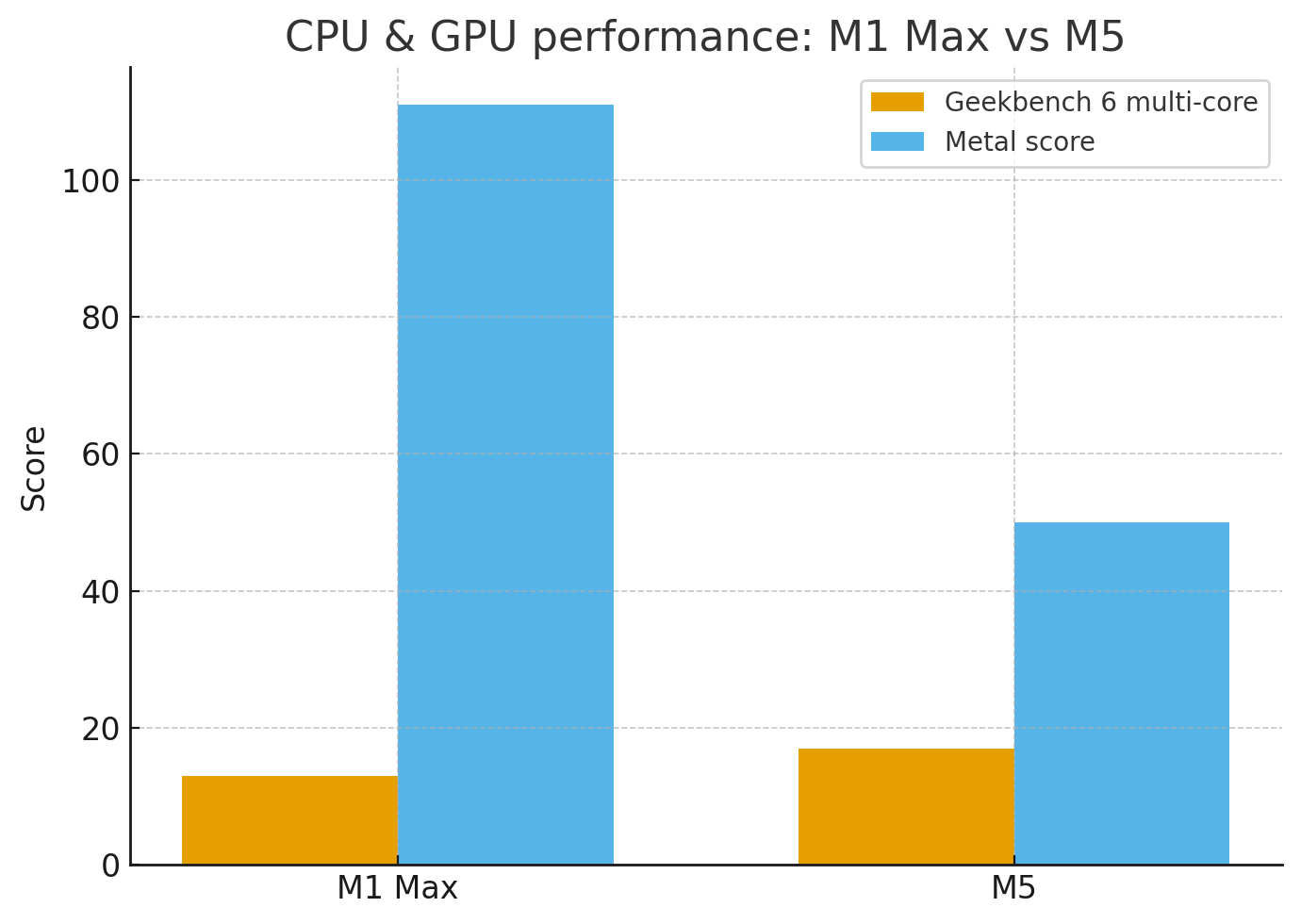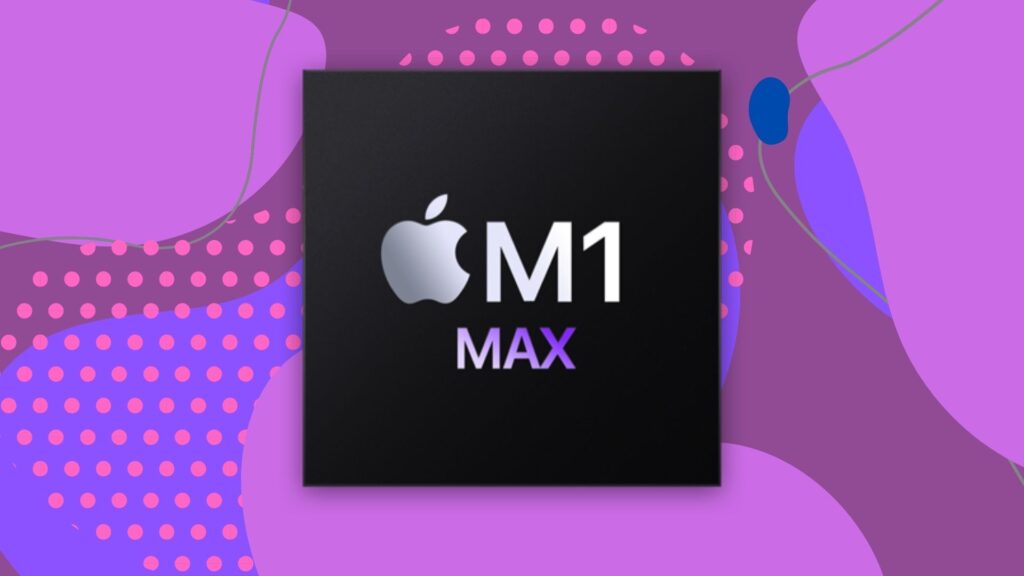- The M1 Max still delivers higher GPU power and memory bandwidth than the M5
- M5 focuses on efficient AI performance and power savings over raw throughput
- Choice of upgrade depends on workload battery priorities and creative needs
Owners of Mac Studio and MacBook Pro systems running on Apple’s M1 Max processor may be pondering the question that all power users eventually ask themselves – is their machine still cutting it, or is it time to move on to a new device?
Apple’s shift from the high-performance M1 Max – which launched in October 2021 alongside the M1 Pro chip – to the efficiency-oriented M5 launched last week shows how much things have changed in just a few years.
On paper, the M5 offers a modern design and better power efficiency, but its hardware aims for a very different goal, and it’s one that not all Mac owners will care about.
Inside Apple silicon: Third part of a five-part series on the M-class processors
This article is the third in a five-part series that takes a deep dive into Apple’s M-class processors, from the early M1 to the recently announced M5 and our expected M5 Ultra. Each piece will examine how Apple’s silicon has evolved in architecture, performance and design philosophy, and what those changes could mean for the company’s future hardware.
The comparison
The M1 Max, which arrived a year after the original M1, was designed for sustained, high-throughput workloads. It has 10 CPU cores and a 32-core GPU, combined with 400 GB/s memory bandwidth.
The M5 chip, which debuted in the 14-inch MacBook Pro, new iPad Pro and an upgraded Apple Vision Pro, has up to ten cores across four performance and six efficiency cores. (There are actually two M5 versions — the 256GB and 512GB iPad Pro models use a nine-core CPU with three performance cores.)
Its GPU count drops to 10 cores with a memory bandwidth of 153 GB/s, less than half that of the M1 Max.
This reduction reflects Apple’s broader trend toward lower thermals and improved per-watt output rather than peak throughput.
The M5’s estimated system draw of 25W makes it an appealing choice for compact, fanless designs – ideal for MacBooks and iPads – but it comes with compromises.
Graphics-heavy tasks, such as 3D rendering or machine learning, will still favor the M1 Max, which retains a raw shader advantage that current efficiency improvements cannot fully offset.
In CPU benchmarks, the M5 narrows the gap with better single-thread performance, benefiting everyday workloads and light creative tasks.
Its estimated multi-core score of around 17,865 edges ahead of the M1 Max’s 13,188, showing Apple’s continued optimization of its performance-per-core ratio.
For those who mainly work with web apps or coding, the M5 feels more responsive in short bursts.
Memory bandwidth provides the clearest difference between the two chips. The M1 Max’s 400GB/s pipeline was built to handle multiple high-resolution video streams and large texture data. The M5’s 153 GB/s cap limits its capacity for these scenarios.
Tasks that benefit from aggregate memory throughput, such as Final Cut Pro exports or multi-layered Photoshop projects, will likely still run faster on the older chip when paired with similar storage configurations.
The M5’s power efficiency and integration are its core strengths. With an improved neural engine that reaches around 133 trillion operations per second, it outperforms the M1 Max’s 11 TOPS unit by a wide margin.
This benefits AI tasks on the device, including live transcription and photo enhancement, areas where the older chip’s architecture is expected to show its age.


M5 Max?
The choice for Mac users therefore depends less on age and more on will. The M5 offers a cooler, quieter and more balanced experience, especially in thin and light systems, but the M1 Max continues to offer unmatched GPU headroom for creative professionals.
For users looking for speed in sustained workloads, the older chip still holds its edge. For those looking for longer battery life, silence and AI acceleration, the M5 is the clear winner.
That said, a true like-for-like comparison (apples to apples, if you will) could come with the eventual M5 Max, which may appear a year or two from now.
Based on estimates from Google Gemini (which also predicted the specs of an M5 Ultra), the chip could have a 32-core GPU, 550 GB/s memory bandwidth, an estimated multi-core score of around 28,555 and a Metal score of close to 200,696, combining the raw Apple efficiency of the Maxi generation with the latest improved silcon efficiency of the M1.
Follow TechRadar on Google News and add us as a preferred source to get our expert news, reviews and opinions in your feeds. Be sure to click the Follow button!
And of course you can too follow TechRadar on TikTok for news, reviews, video unboxings, and get regular updates from us on WhatsApp also.



